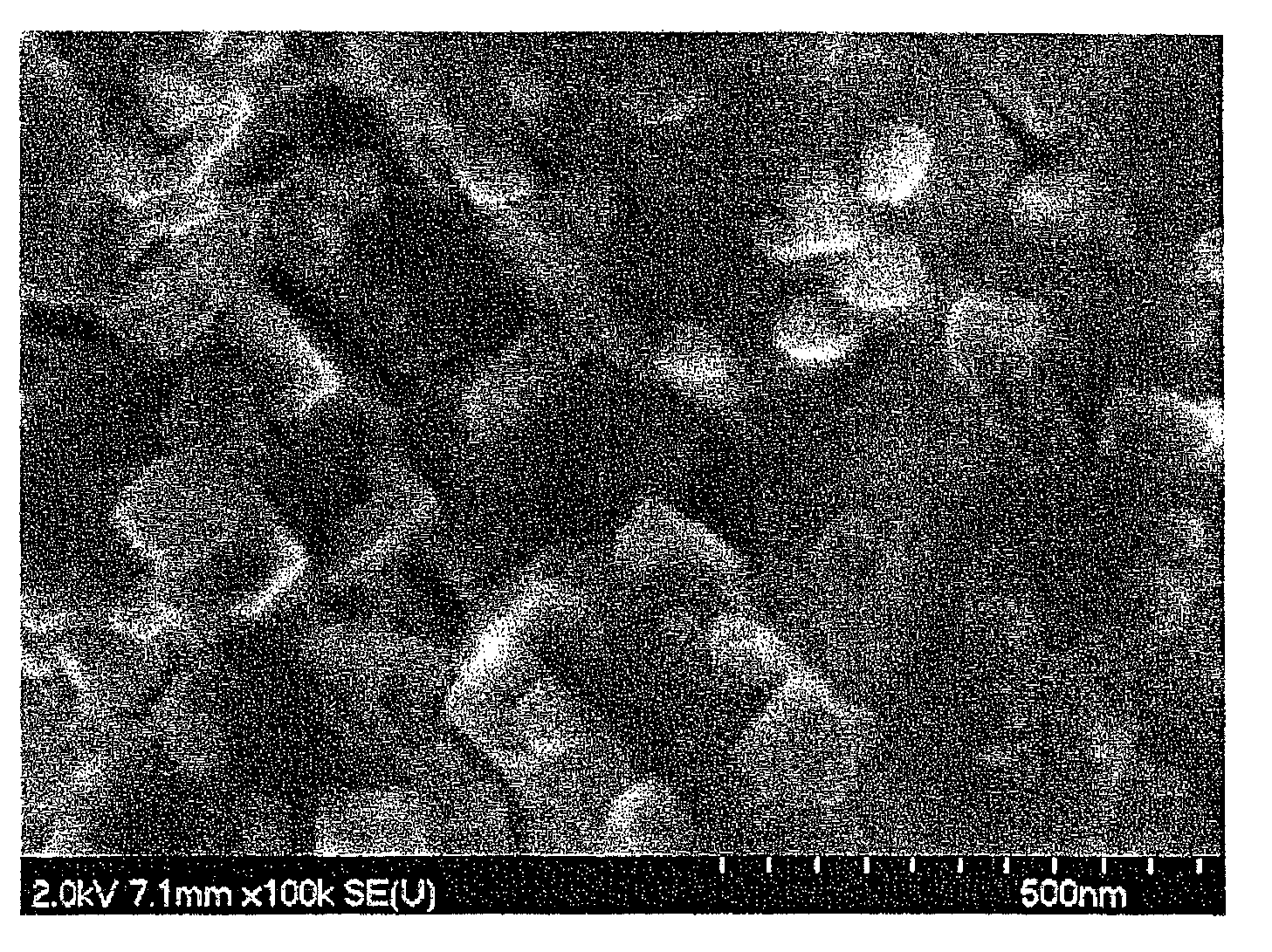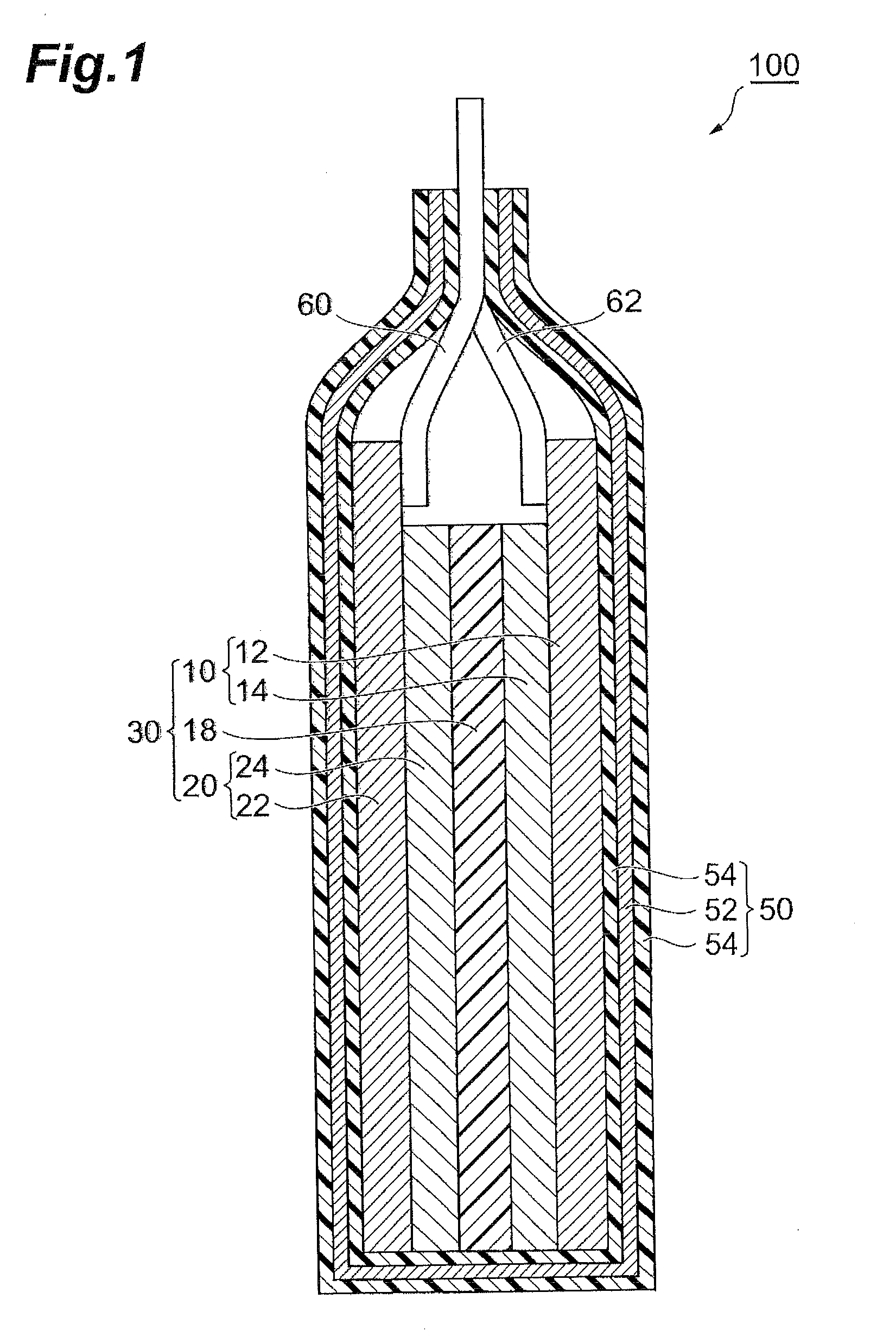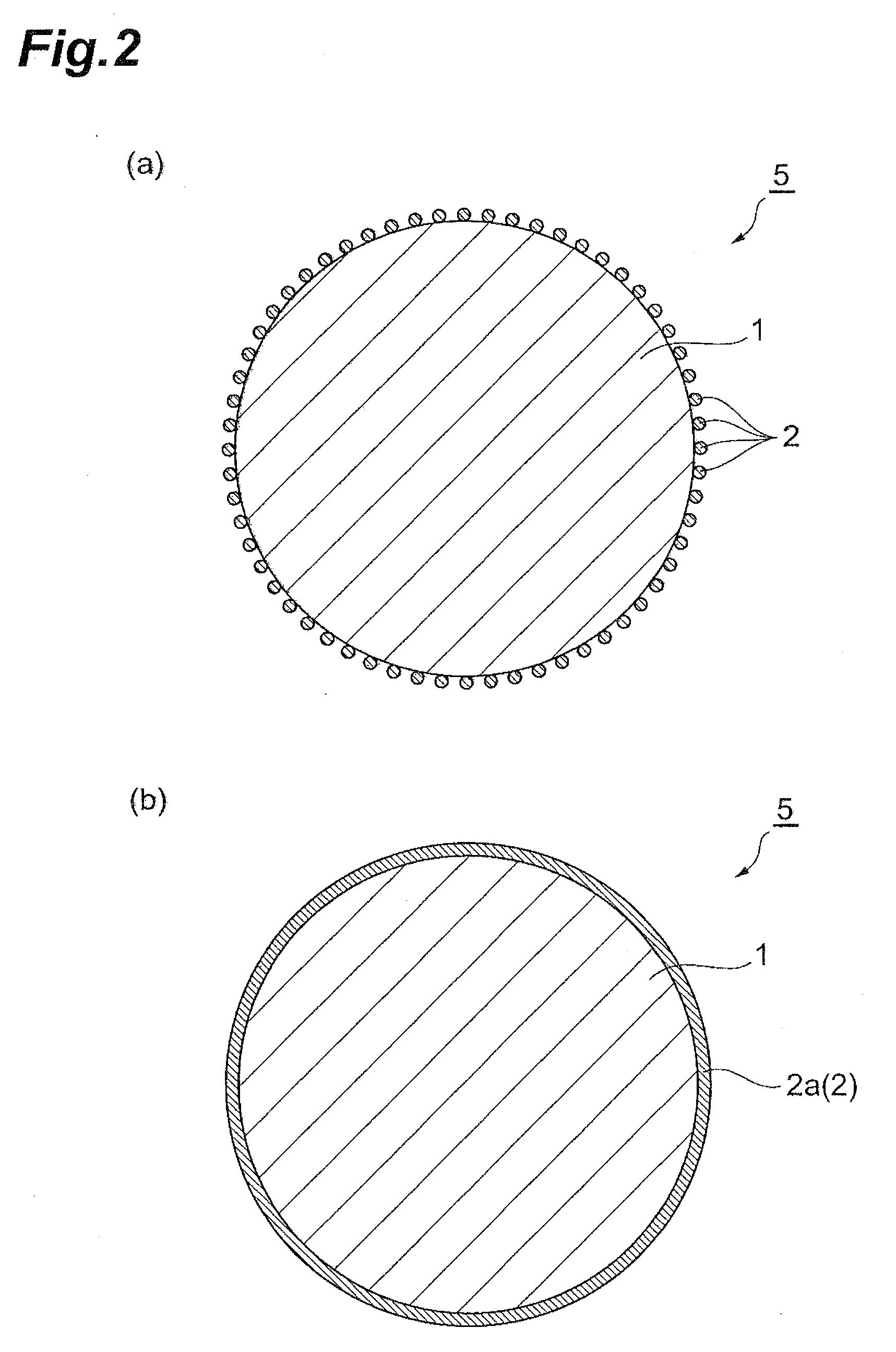Method of making active material and electrode
a technology of applied in the field of making active materials and electrodes, can solve the problems of particularly poor charge-discharge cycle characteristics, and achieve the effects of high resistance, poor charge-discharge cycle characteristics, and sufficient cycle characteristics
- Summary
- Abstract
- Description
- Claims
- Application Information
AI Technical Summary
Benefits of technology
Problems solved by technology
Method used
Image
Examples
first embodiment
Positive Electrode and Method of Making it
[0038]An embodiment of the invention will now be described. According to this embodiment, a positive electrode active material is formed having metal oxide particle groups already formed on lithium-containing metal oxide particles, and the surface-modified positive electrode active material is used to fabricate a positive electrode.
[0039](Method of Making Positive Electrode Active Material)
[0040]First, lithium-containing metal oxide particles are prepared. A lithium-containing metal oxide is an oxide containing lithium and a metal other than lithium. There are no particular restrictions on the metal other than lithium, but it is preferably at least one metal selected from the group consisting of Co, Ni, Mn and Al. As examples of such lithium-containing metal oxides there may be mentioned LiMn2O4, Li4Ti5O12, LiMn2-xAlxO4 (where x is greater than 0 and less than 2), LiMO2 (where M represents Co, Ni or Mn), LiCoxNi1-xO2, LiCoxNiyMn1-x-yO2 (wher...
second embodiment
[0092]The second embodiment of the invention will now be explained. According to the invention, the lithium-containing metal oxide particles 1 are used before forming the fluoro complex-derived metal oxide particle groups 2, to produce a positive electrode 10 already comprising a positive electrode active material layer 14, and then the positive electrode 10 is contacted with an aqueous solution containing a metal-fluoro complex to form fluoro complex-derived metal oxide particle groups 2 on the surfaces of the lithium-containing metal oxide particles 1 in the positive electrode active material layer 14. That is, the lithium-containing metal oxide particles in the positive electrode active material layer 14 are modified.
[0093]The method of making the positive electrode 10 is the same as for the first embodiment, except for using lithium-containing metal oxide particles that have not been surface-modified. The aqueous solution containing the metal-fluoro complex and lithium salt, whi...
example 1
[0097]In Example 1, Li1.0Ni0.79Co0.19AL0.02O2 particles were used as the lithium-containing metal oxide for the positive electrode.
[Surface Modification of First Metal Oxide with Zr Fluoro Complex]
[0098]SnF2 (product of Morita Chemical Industries Co., Ltd.), H3BO3 (product of Kanto Kagaku Co., Ltd.) and LiNO3 (product of Kanto Kagaku Co., Ltd.) were each dissolved in water to 0.01 M, 0.05 M and 1 M, respectively (to form a solution hereinafter referred to as “LPD treatment solution”). Li1.0Ni0.79Co0.19AL0.02O2 particle groups (mean particle size: 13 μm) were loaded into the solution kept at 40° C., and the mixture was agitated for 3 hours.
[0099]The solution was then filtered, washed with water and dried to obtain active material particles. An SEM photograph is shown in FIG. 3, TEM photographs are shown in FIG. 4(a) and FIG. 4(b), and the results of chemical analysis of the obtained active material by ICP (inductively coupled plasma emission spectroscopy) are shown in Table 2. An SnO...
PUM
| Property | Measurement | Unit |
|---|---|---|
| energy density | aaaaa | aaaaa |
| charging voltage | aaaaa | aaaaa |
| charging voltage | aaaaa | aaaaa |
Abstract
Description
Claims
Application Information
 Login to View More
Login to View More - R&D
- Intellectual Property
- Life Sciences
- Materials
- Tech Scout
- Unparalleled Data Quality
- Higher Quality Content
- 60% Fewer Hallucinations
Browse by: Latest US Patents, China's latest patents, Technical Efficacy Thesaurus, Application Domain, Technology Topic, Popular Technical Reports.
© 2025 PatSnap. All rights reserved.Legal|Privacy policy|Modern Slavery Act Transparency Statement|Sitemap|About US| Contact US: help@patsnap.com



